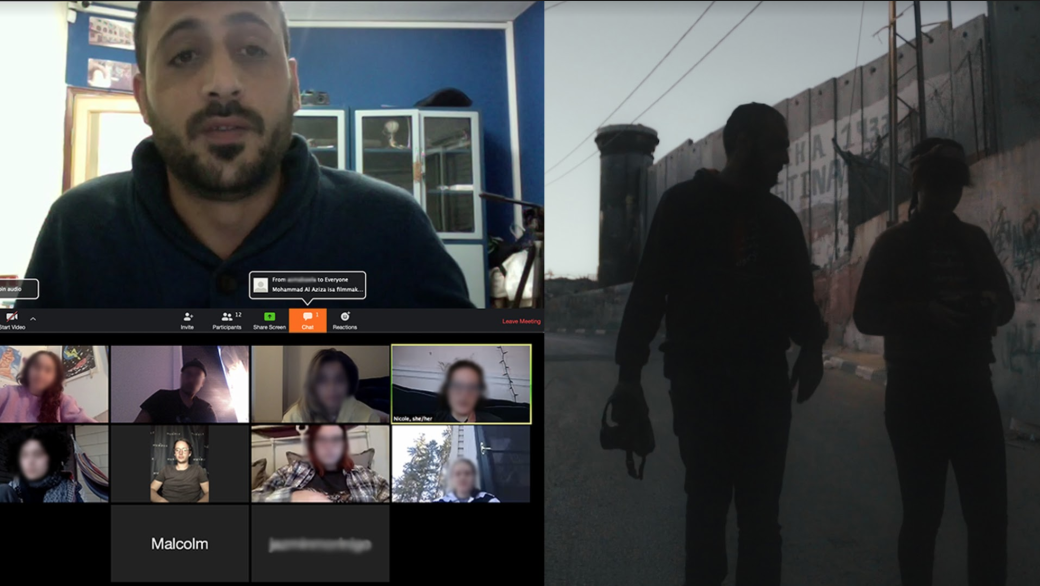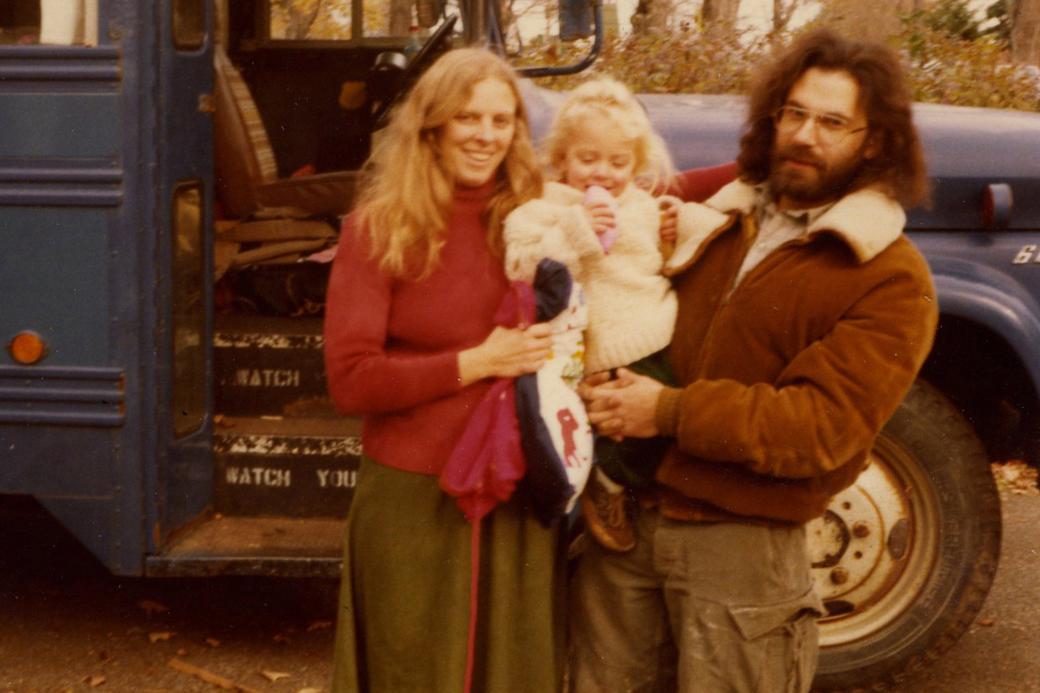Back to School?

Photo credit: Philippe Bout
"It’s the Most Wonderful Time of the Year.” The Christmas-time tune, originally crooned by Andy Williams in 1963, gets plucked from mothballs every August. As parody, the big-box office supply store Staples appropriates the song for the theme of its back-to-school television ads. Childlike parents cavort in shopping carts down the store’s aisles, gleefully collecting school supplies in anticipation of the end of summer vacation.
The Fall semester of 2020 is certain to be different.
The coronavirus pandemic has teachers, parents, staff, and students debating the merits of in-person classes versus virtual courses. Valid arguments based on health precautions, educational/socializing objectives, and economic considerations can be made on both sides. Regardless, the likely outcome is that much, if not all, teaching and learning will occur online for the coming term.
That being the case, New Day Films has created a treasure chest of educational documentaries and techniques that engage, energize and educate students both in the classroom and from afar.
--------------------------------------------------------------
“Despite all of the heartache and downsides social distancing brings to us across the world, it has allowed me the opportunity to think differently about how my film, Hurdle, could be screened and useful to educators. Through all of the stages of social-distancing and lockdowns, professors, student groups, and nonprofits have found my film to be a valuable prompt to discuss the topics that are important to them and also to simply have a reason to digitally come together for valuable social interaction. I’ve watched as students’ eyes light up as the characters from Hurdle surprise them by popping into the Zoom Q&A sessions all the way from the West Bank, Palestine! With our screenings paired with a digital Q&A, the very folks who fill the screen or who are behind the camera can be there to answer in-depth questions and make the screening a more profound, insightful and interactive experience.”
Michael Rowley, New Day Films, ‘Hurdle’
--------------------------------------------------------------

Why Make New Day Films a Part of Your Classroom?
Our collection of educational documentaries enables instructors to capture students' attention and enhance their retention. With New Day Films' educational licenses, educators have control over their content and the opportunity to present clear, creative, and concise material not found in textbooks.
Other advantages to infusing distance learning with educational documentaries include:
Video is a Wildly Popular Educational Tool
According to the 2018 findings of Pearson Publishing, 59% of Gen Z students prefer YouTube as their learning tool. Further, 80% of Gen Z teenagers claim that YouTube has boosted their knowledge on a certain subject and 68% say YouTube has helped them gain or improve skills that will benefit their future. Nearly half of educators estimate that typical students watch between six and twenty educational videos every month. (Interestingly, 60% of Millennials still prefer books! Who knew?)
Teaching Via Video Meets Most of a Learner’s Needs
Visual cues help students retrieve and remember information. The right visuals can make difficult concepts easier to understand. Research indicates that 95% of a message is retained when a student views it in video format compared to 10% when the message is read in text.
In an article entitled, “Learning Through Visuals,” published in Psychology Today, Dr. Haig Kouyoumdjian writes that using visuals effectively decreases learning time, enhances retrieval, and increases retention. As video is one of the ultimate information delivery systems, it stands to reason that effective video instruction can achieve similar results.

Photo credit: Kon Karampelas
Video is Deeply Engaging
On social media sites like Facebook, video attracts more engagement than any other sort of post. Video doesn’t just engage the senses, it makes people feel something. Writing in the April, 2019 edition of Video, Consumer Insights, Taylor Jenkins notes that 70% of those surveyed said they felt empowered, motivated or confident after learning something new from a YouTube video.
Video’s Flexibility and Accessibility are Advantageous for Students
Asynchronous film presentations allow students to watch on their own time, providing the flexibility needed to view when they’re able to. This also works smoothly across devices, unlike text-based content, which may not scale well, making it hard to read on the smartphone screens students may be using for their studies.
It also lets students learn at their own pace, allowing them to press play, pause, and rewind as needed without the deterrent of feeling that they’re interrupting the whole class. Captions and audio description make teachings accessible for students with disabilities.
--------------------------------------------------------------
“I’ve been teaching filmmaking at the University of Arizona in Tucson for nearly 30 years, and have drawn on dozens of New Day films and filmmakers both in the classroom and for public events like the DocScapes film and workshop series. In recent years I’ve also begun teaching in an online graduate program in Human Rights Practice, and created a course that delves deeply into the outreach and impact work that New Day filmmakers like Paco de Onis and Pamela Yates, Ellen Bruno, PJ Raval, Heather Courtney and Anayansi Prado, Michael Premo, Amie Williams, Meena Nanji, Suzan Beraza and Marianne Teleki have done with their films. The highlight of each week is a Zoom presentation by the filmmaker, after the students have studied their work, and the students have found these intimate encounters transformative. I’m fortunate to have had this online teaching experience before the virus hit in March, so after Spring Break was able to transition my undergrad course in activist filmmaking about migrant justice to the online space with minimal disruption. My New Day colleagues have also been incredibly generous mentors to my documentary production students over the years.”
Beverly Seckinger, New Day Films, ‘Laramie Inside Out’ and ‘Hippie Family Values’
--------------------------------------------------------------

Best Practices
1. Regardless of internet capacity, streaming video via screen-share will result in poor audio and video quality, and may run into copyright or encryption issues. Instead, it is best to direct students to view the content independently.
2. Send streaming links with longer content to students a few days in advance. This allows them to watch the content independently. The instructor’s classroom management can be enhanced by allowing asynchronous viewing ahead of class discussion.
3. Incorporating film into the curriculum gives students a collective experience, not to be downplayed in a time of isolation. Consider hosting a Zoom discussion with your students or a Q&A with a New Day filmmaker for a more in-depth and personal look at the topics covered in our films.
4. Provide direction upfront about what students should be looking for and what will be discussed in the synchronous session subsequent to the film. Students could keep a video response journal recording their comments and questions to be shared with the class. Instructors also can prepare stills from key moments of the film to stimulate and guide discussion.
For shorter clips, you can send the link in the chat during the lesson. Students will have to pause briefly to view the clip, and then return to discuss it. When using this technique, instructors are cautioned to mute all microphones to avoid feedback. Students should be provided with time codes and directed questions, along with the clip, to maximize their learning experience.
5. Make sure documentaries used have closed captioning and audio description available ensuring all students, including those with disabilities, have equal access to the material.
Final Thoughts
--------------------------------------------------------------
“Especially in these times, students, academics, and filmmakers from far-flung corners of the world are using film to connect, provoke, debate, and inspire change.”
Elinor Kowarsky, “Proquest Enhance Distance Learning”
--------------------------------------------------------------
-
New Day Films has award-winning educational documentaries that span the spectrum of subject matter and are available today for in-person or distance learning.
-
Developing media literacy skills is critical in a time where media/social media is one of the only ways we can connect with others and collect information.
-
Incorporating documentaries into lesson plans creates a timely opportunity to teach students how to describe the visual language of film during class discussions.
-
If you have questions on how to bring a New Day Films title or our entire library to your institution, please contact us.
Additional Resources
Daniels, J. (2014, February 14). Teaching and Learning with Documentaries in the Digital Era. Retrieved July 16, 2020, from https://JustPublics365.commons.GC.cuny.edu/02/2014/teaching-and-learning-documentaries/
Hill, J. (2020, June 22). Teaching Film in the Time of Zoom. Retrieved July 16, 2020, from https://www.CalTech.edu/about/news/teaching-film-time-zoom
ProQuest Enhances Distance Learning with Documentaries from FILM PLATFORM. (2020, May 5). Retrieved July 16, 2020, from https://AlexanderStreet.com/news/proquest-enhances-distance-learning-documentaries-film-platform
UFVA Online Teaching Forum. (2020, March 13). Retrieved July 16, 2020, from http://UFVA.org/news/ufva-online-teaching-forum/
Kiely Quinn, New Day Intern, contributed significantly to this piece.